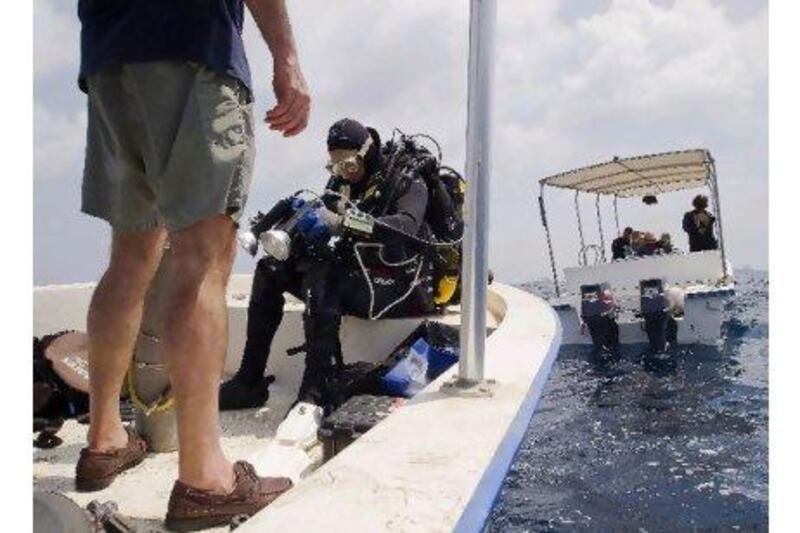The Dubai-based team of wreck-hunters use special breathing gas mixes to go far deeper than a normal sports diver could reach - a branch of the sport known as technical diving.
The average weekend diver can reach around 40 metres breathing air. Going deeper would lead to a condition known as nitrogen narcosis, which is caused by inhaling increasingly pressurised nitrogen and creates a dangerous feeling of inebriation.
An additional problem is created by oxygen, which becomes poisonous and deadly when breathed under pressure - even when inhaled at just 10m.
Air consists of 21 per cent oxygen and 78 per cent nitrogen, with the remaining one per cent a mixture of other gases.
Technical divers overcome deep diving issues by using a mixture of helium, oxygen and nitrogen called trimix.
"We put helium into the standard breathing mix for a number of reasons," said Ali Fikree. "One, it eliminates nitrogen narcosis, which at depth can be fatal.
"Also the oxygen content of air is pretty toxic once you exceed 60m. So we eliminate a lot of the oxygen, the gas we breathe at 100m as a general rule is approximately 10 per cent oxygen, 60 per cent helium and the rest nitrogen."
Divers absorb the gases they breathe under water into their body tissues, which is why they must make a slow return to the surface.
"When you're coming up, essentially you're decreasing the pressure so you've got to let out the gas before it turns into a bubble, which can cause death or paralysis - this is decompression sickness," added Mr Fikree. "So even on the way up we're breathing multiple gases and different breathing mixes."
Technical divers use one of two techniques .
One involves breathing from up to six conventional scuba tanks, each with a regulator attached.
Each tank contains a different gas mix that can be breathed safely at a particular depth - when the diver reaches a particular depth he switches to the tank containing the appropriate mix.
Technical dives can also be carried out by using a piece of equipment known as a rebreather.
These cut down on the number of tanks needed by recycling the exhaled breath of the diver.
In some models a built-in dive computer automatically adjusts the gas mixture.






